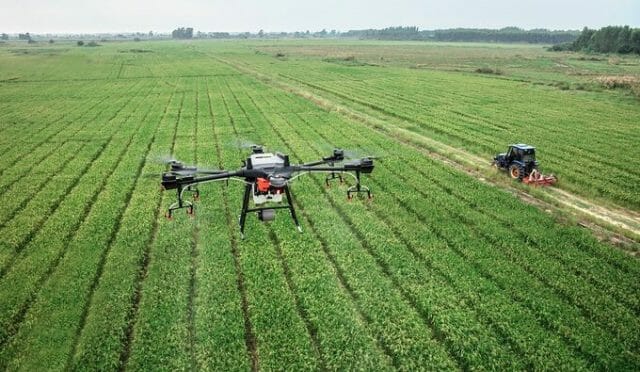
The term smart agriculture refers to the usage of technologies like Internet of Things, sensors, location systems, robots and artificial intelligence on your farm. The ultimate goal is increasing the quality and quantity of the crops while optimizing the human labor used.
Example technologies used in smart agriculture are:
- Precision Irrigation and precise plant nutrition
- Climate management and control in greenhouses
- Sensors – for the soil, water, light, moisture, for temperature management
- Software platforms
- Location systems – GPS, satellite, etc
- Communication systems – based on mobile connection, LoraWan, etc
- Robots
- Analytics and optimization platforms
What are the processes taking place on a farm using smart agriculture?
Data collection
The sensors installed at all critical places in the farm gather and transmit data about the soil, air, etc
Diagnostics
The data collected is analyzed by the system and conclusions are made regarding the status of the object or process monitored. Potential problems get identified.
Decision making
Based on the problems identified in the previous steps, the software platform and/or a human managing the platform decides on actions that need to be taken.
Actions
The actions identified in the previous step are performed. A new measurement on the soil, air, moisture, etc is performed by the sensors and the whole cycle starts again.
Why is smart agriculture important?
- Modern machines can control the efforts of farmers.
- They reduce the time.
- Used to supply water to the crops.
- Machines are useful in sowing the seeds.
- They are used in transportation.
- Irrigational technology.
- Application of synthetic fertilizers.
- Chemical pest control.
- They increase the price and demand of the products.
- Better marketing and exposure to the price.
- Facilities in online trading and E-Commerce.
- Further, Improve the fertility of the soil.
- Decrease the use of water, Fertilizers which keeps the prices down.
- Low run of chemicals and also waste materials into seas and water.
- Reduce impact on the ecosystem.
Challenges
- The excessive use of chemicals by the help of machines reduces the fertility of the land.
- Lack of practical knowledge the farmers can’t handle the machines properly.
- While the cost of maintenance is very high.
- Overuse of machines may lead to environmental damage.
- It is efficient but has many side effects and drawbacks.
- Driverless agriculture machines are a liability to access the technology.
- Improve the scouting programmes.
- The robotic machine could not change their culture, we have to set their programme manually.
- Most of the farmers are illiterate so they are unable to use the modern machines.
The Internet of Things has truly enhanced many industries by providing data collection, real-time insight and process automation through low cost sensors and IoT platform implementation. As seen in the above benefits, the farming and agriculture industry overall can really benefit from implementation of such an IoT solution or platform. Not only is a smart agriculture solution the innovative farming method of today, it is the key solution to the growing concern of the global population’s food consumption and environmental footprint. For any inquiries contact Mazero Agrifood on 0729777711.

